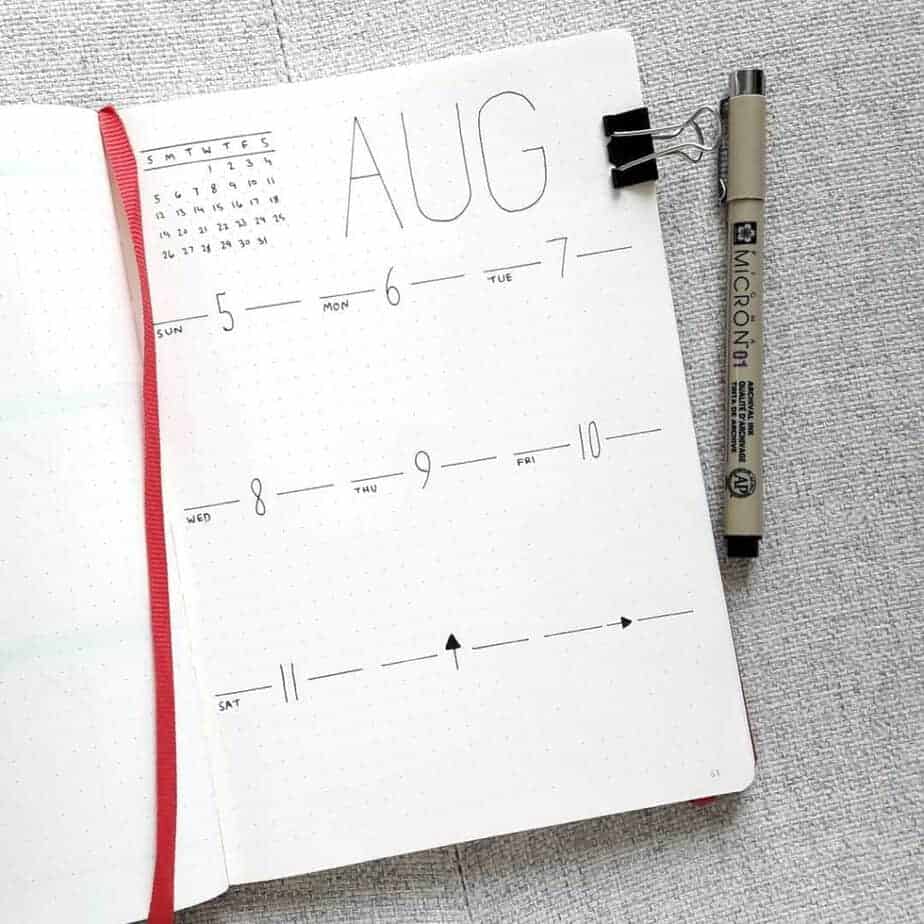If you’re the kind of person who loves to set goals for yourself, you’ll love these minimalist bullet journal weekly spread ideas and layouts! We have a few different styles to share, but bullet journaling can really be designed around your personal preferences and is an ongoing process!
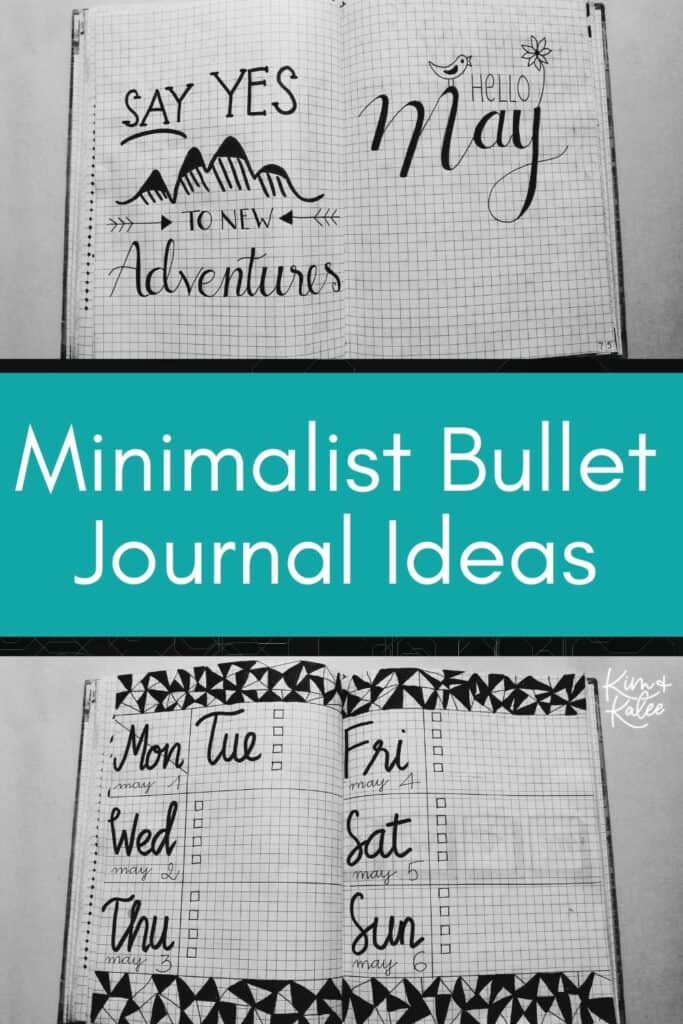
We love these minimalist bullet journal weekly spreads because they are a fun way to track your progress! You can chose any of these minimalist bullet journal spreads and how you much time you want to put into each one! We love the look of a minimalist weekly bullet spread, but we’ve also included amazing weekly spreads that include space for flower doodles, hand lettering, and fun washi tape! Journaling is such an easy way to unleash your creativity and motivation!!
What’s a Minimalist Bullet Journal?
A minimalist bullet journal is a simple layout typically done in just black ink and a lot of negative space.
Each person’s bullet journal method will and should be different though. The cool thing about keeping your own journal is that there are no right or wrong ways to do it!

3 Tips to Creating Your Minimalist Bullet Journal Layout
As you begin bullet journaling, we recommend starting with a simple design and leave enough space to doodle and have fun with it!
When coming up with ideas for your bullet journal layout, take these factors into consideration:
1. The size of your handwriting.
You want to be comfortable as you journal, so trying to squeeze big handwriting into a tiny space or working to fill up a big section with tiny handwriting usually doesn’t work. Instead, create each section of your layout based on the size of your handwriting to ensure that everything will fit inside your daily bullet journal.
2. Your planning schedule.
Do you make plans well in advance? Or do you to focus on day-to-day activities? Your scheduling practices can help you plan how your journal will be laid out, too.
3. What you’ll be tracking.
Knowing what you’ll track in your journal is a simple way to decide the type of layout you should use. Consider the aspects of your life you want to include in your journal to pick the best spreads and layouts for you.
You may also like our guide to the best bullet journaling pens and supplies.
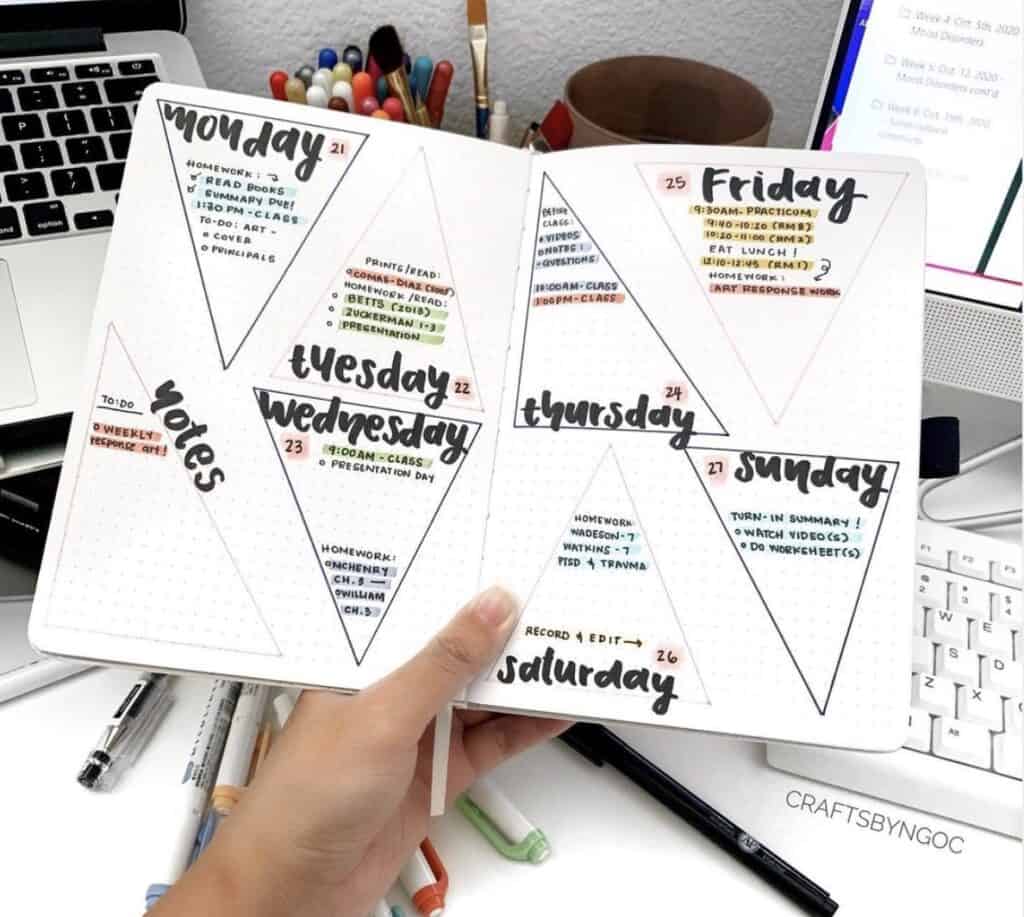
Credit: @craftsbyngoc
Minimalist Bullet Journal Weekly Spread Ideas & Layouts to Try
Once you have an idea of how you’ll use your journal, you can start working on creating weekly spreads and layouts. And since there are a variety of options to choose from, you can tailor your bullet journal to suit your needs.
Daily spread.
Using days of the week as part of your journal layout is great for anyone who lives a busy, fast-paced life. A daily spread is perfect for tracking to-do lists, keeping up with appointments, and journaling about your day. Daily pages can be adjusted to suit your needs, making them a great choice for minimalist journaling.
Your daily spread could include things like:
- The day and date
- Your daily schedule with meetings
- Important tasks to complete that day
- Goals for the day
- Notes and ideas
- Inspirational quotes and doodles
- Gratitude logs
- Daily journal prompts
- Manifestations
- Budget or expense log
- Water intake
- Chores
- Exercise tracking
- Meal planning or calorie intake
- Water Intake
- Mood Tracker
- Reminders
- Upcoming Birthdays
- Affirmations
Want more prompts? Check out 31 Best Art Journal Prompts to Inspire Creativity!
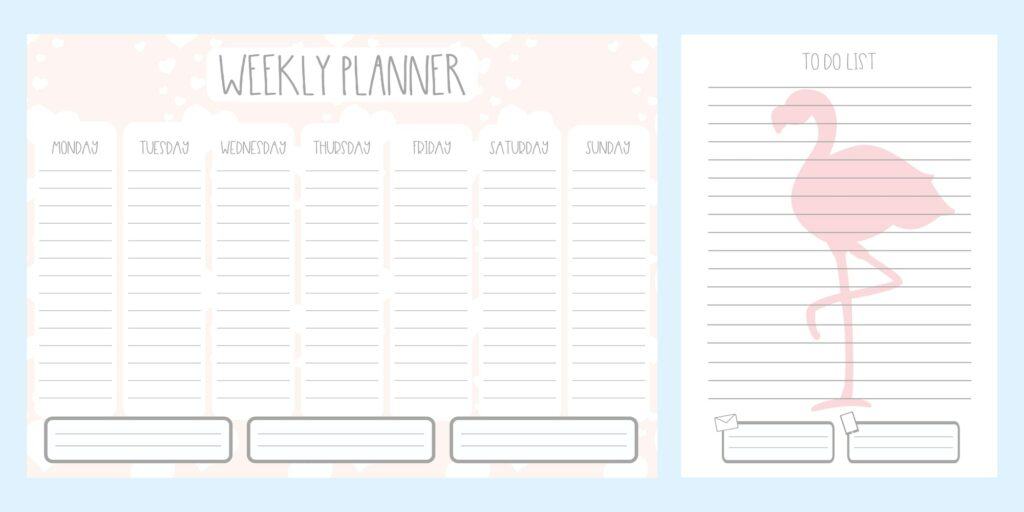
One weekly spread.
While daily spreads are great for keeping up with the day-to-day stuff, you might also enjoy taking a look at your entire week as you journal. Weekly layout ideas allow you to plan ahead, keep track of appointments in the near future, and upcoming due dates.
Coming up with creative weekly spreads will allow you to make this popular journal layout work for you.
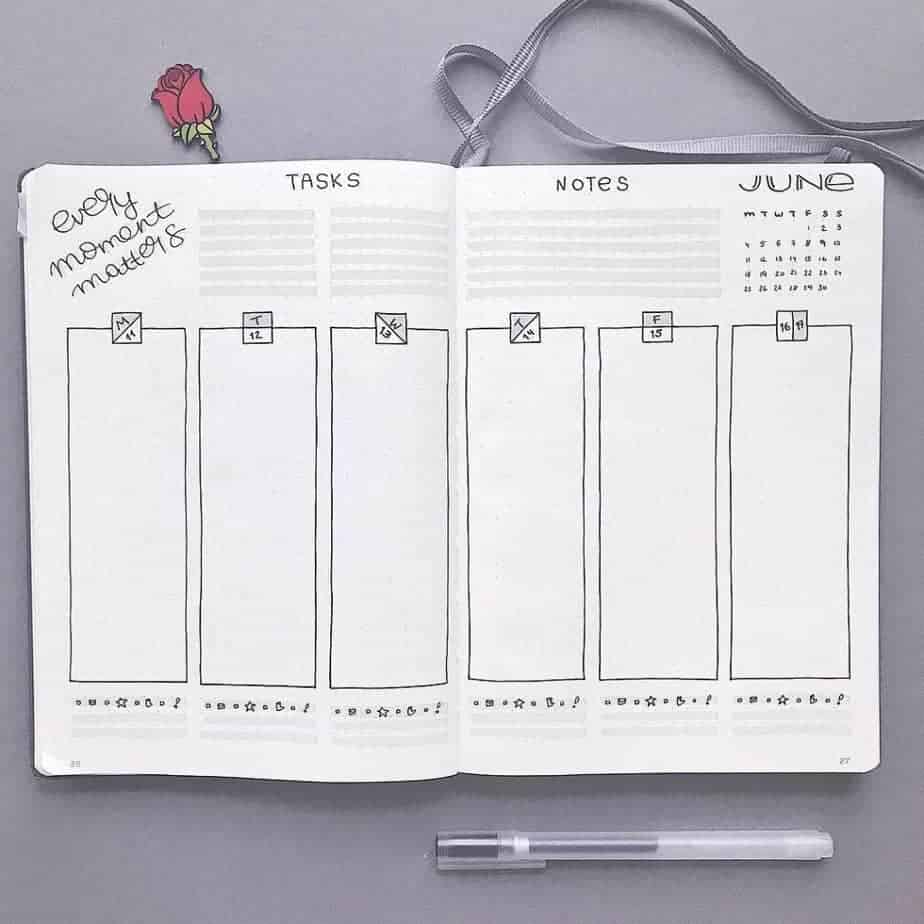
Credit: @bujoist
Depending on the items you plan to track in your weekly journal, there are a few different layout options to choose from, like:
- Vertical layout. When creating a list for each day of the week, a vertical layout is a good choice. Place the day of the week at the top of your column, then fill in the details for each day under the daily heading.
- Horizontal layout. To keep your minimalist weekly journal on one page, a horizontal layout is a good option. Section off seven horizontal sections on your page, then label each section for each day of the week. Use the space under each heading to keep track of your to-do list, appointments, and goals for each day.
Monthly Log.
In addition to keeping track of your day-to-day and weekly activities, you might also find it helpful to add a monthly spread to your bullet journal.
A calendar spread can help you keep track of future appointments and goals. When planning your monthly spread, consider these layout options:
-
Traditional calendar.
Using a traditional calendar layout is a great choice when you want to create a single, organized page for each month. Use squares to signify each day in the month, then add the corresponding activities, holidays, and appointments to each square.
-
Vertical columns.
Another minimalist approach to calendar pages is to create vertical columns for the month. Simply line up daily numbers along the left or right margin, then fill in the line next to the number with important events for that date.
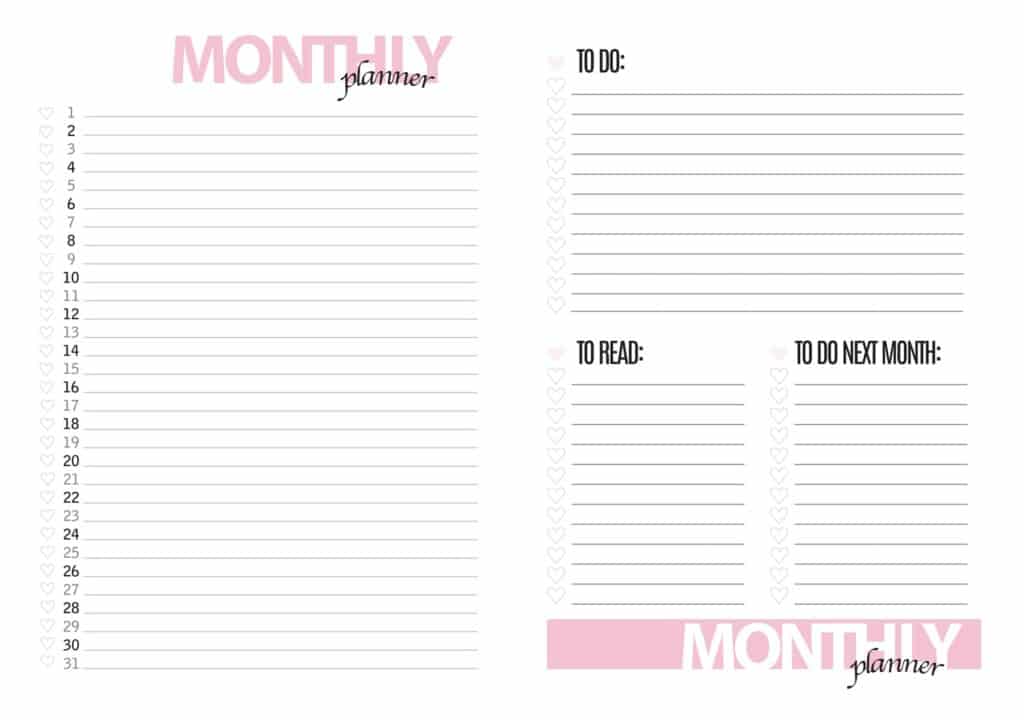
Separate sections for daily, weekly, and monthly spreads.
There’s no reason you can’t combine different spreads in your journal to create a layout that’s perfect for you. Think about your planning and journaling goals to decide what layout would benefit you most.
-
Weekly/monthly spreads.
Separate sections for weekly and monthly spreads can allow you to keep your entire week in view, in addition to tracking future appointments and goals.
-
Daily/monthly spreads.
Creating sections for daily and monthly spreads is great for keeping a more detailed log of your day-to-day activities, while also helping you plan for the future.
-
Monthly spread with extra pages.
Planning ahead with a monthly calendar spread is a great way to keep track of your ongoing obligations, but it may not be enough space for all your journaling needs. You can create separate sections for other journaling ideas, like:
-
Rolling to-do list.
Instead of tracking your daily to-do list, creating an ongoing to-do list is a great way to stay on top of your obligations without the need for daily spreads.
-
Project pages.
To keep track of individual projects or goals, try creating project spreads as part of your journaling efforts.
-
Gratitude logs.
Add to your monthly journal spread by creating gratitude logs, which allow you to track the things your most grateful for each day, week, or month.
-
![]()
Making Your Planner a Habit Tracker
Once you have an idea of the layout you want to use in your bullet journal, you can start think about what you’ll write about. The topics you choose for your journal will depend on your journaling goals.
Consider tracking these topics in your daily, weekly, and monthly spreads:
Health.
Tracking different aspects of your health is a great way to ensure you’re making great choices for your body. Try keeping track of your fitness, stretching, meal prep, sleep, water intake, sugar intake, caffeine intake, weight loss, number of steps, and calorie intake.
Favorite things.
Writing down some of your favorite things is a great way to make yourself smile during the day. Keep track of your favorite places, books, words, movies, songs, Bible verses, and affirmations.
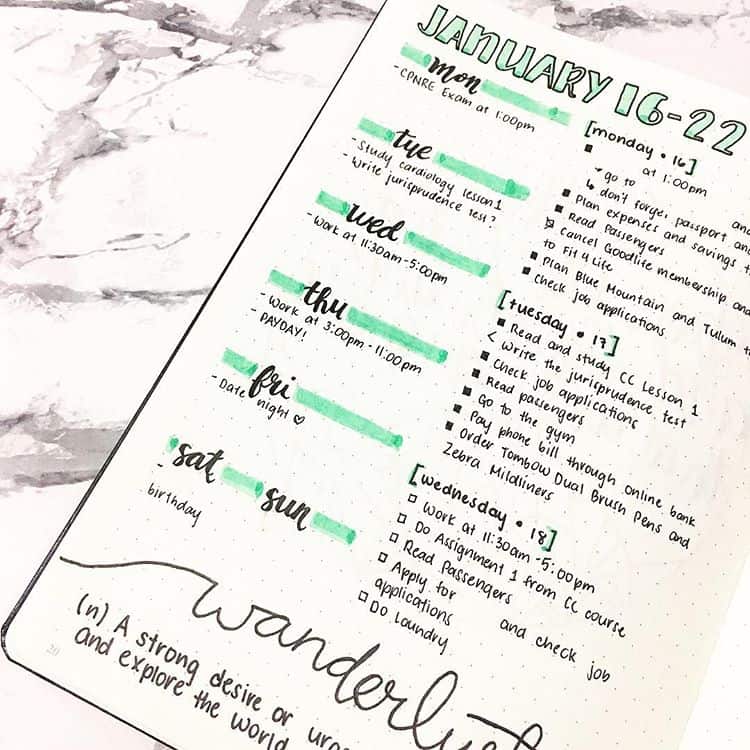
Credit: @buj.o
Gratitude.
Tracking the things you’re grateful for is another great way to improve your mood and take the time to appreciate everything you have in your life.
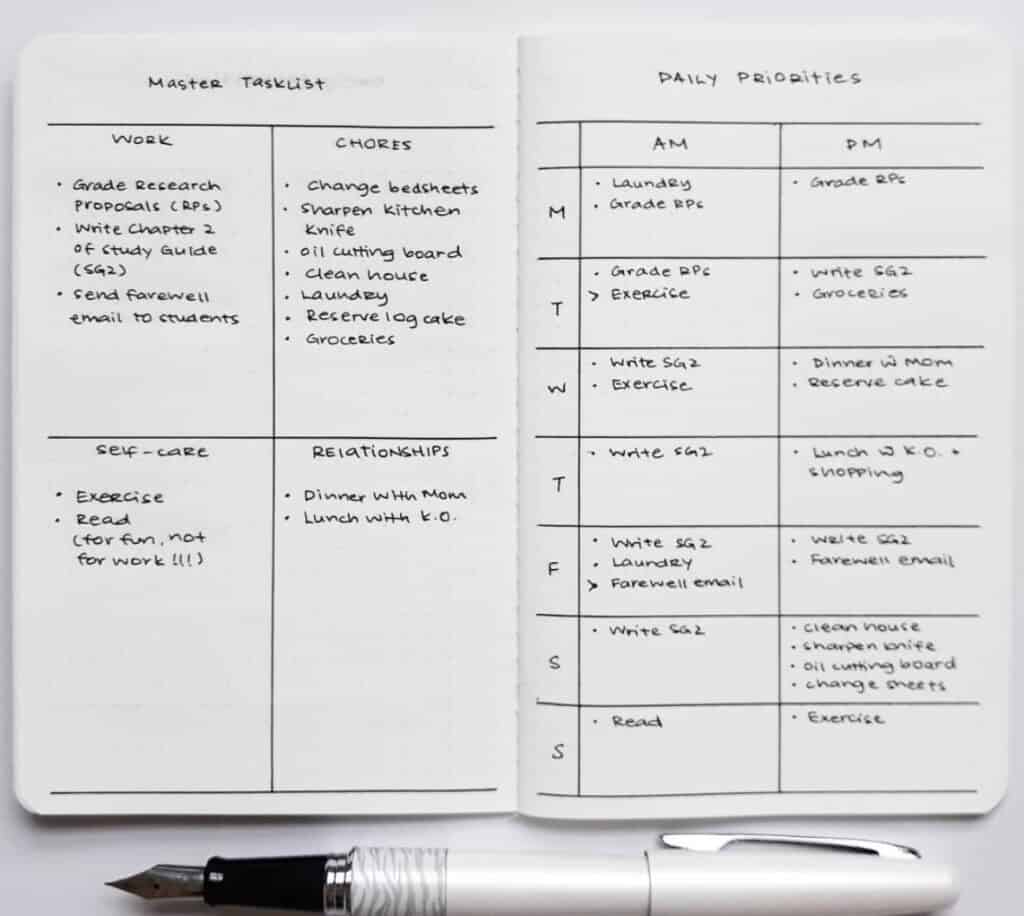
Credit: @yukikosakamura
Self-care.
Taking care of yourself is essential, which means it’s a great thing to track in your journal. Taking note of things like your skin care routine, nail care, personal development, and relaxation time is perfect for your bullet journal.
Spirituality.
Tracking the progress you make in your spirituality is perfect for bullet journaling. Track your daily prayers, affirmations, Bible study, and favorite verses can help you stay on track as you work to improve your relationship with God.
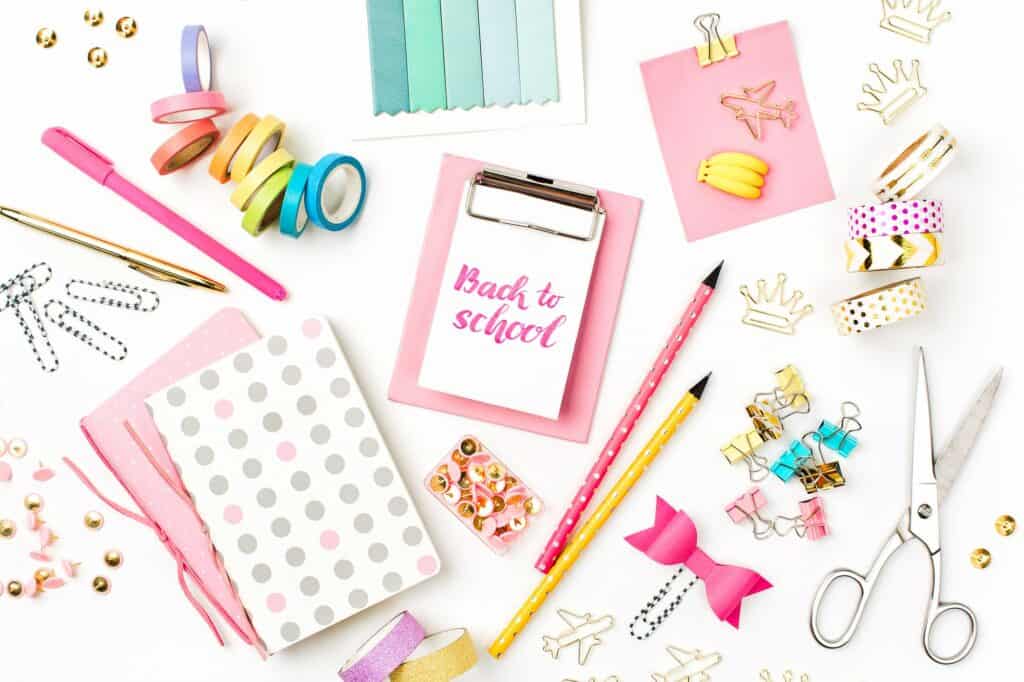
School work.
Using your journal to ensure you stay on top of school assignments and activities is another option for your daily spreads. You can keep track of assignment due dates, homework assignments, extracurricular activities, and meeting dates.
Household chores.
Staying on top of household chores can be difficult if you aren’t organized. Tracking your daily household chores, cleaning tasks, and family obligations in your journal can help you stay on top of everything.
Budget.
Using your bullet journal to keep track of your budget can ensure you don’t overspend each month. Track your income and expenses each day and bill due dates in your journal is a great way to stay on budget.
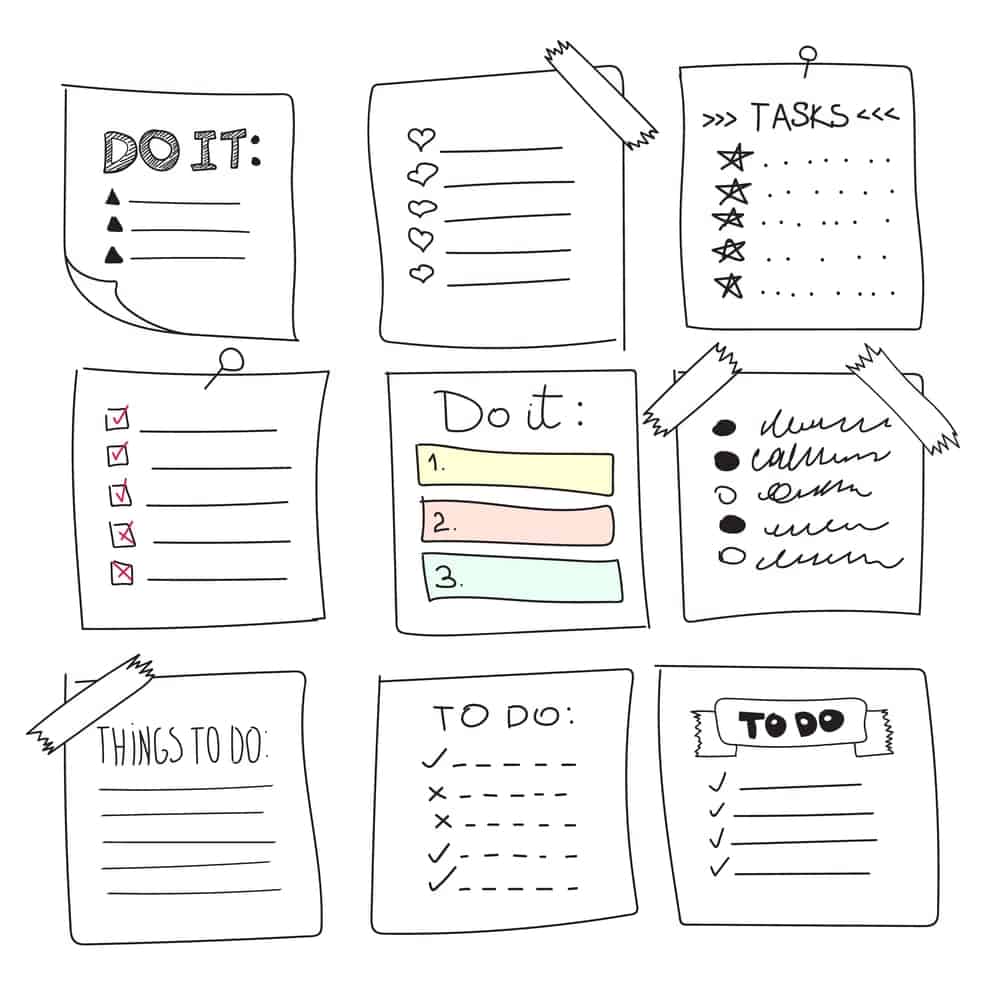
To do list.
One of the best ways to use your bullet journal is to track important tasks you need to complete each day, important things you have to do in the future, daily tasks you need to do, and upcoming important days.
In addition to keeping track of daily tasks, you can also use your bullet journal to keep a weekly log of your goals and your progress toward achieving those goals.
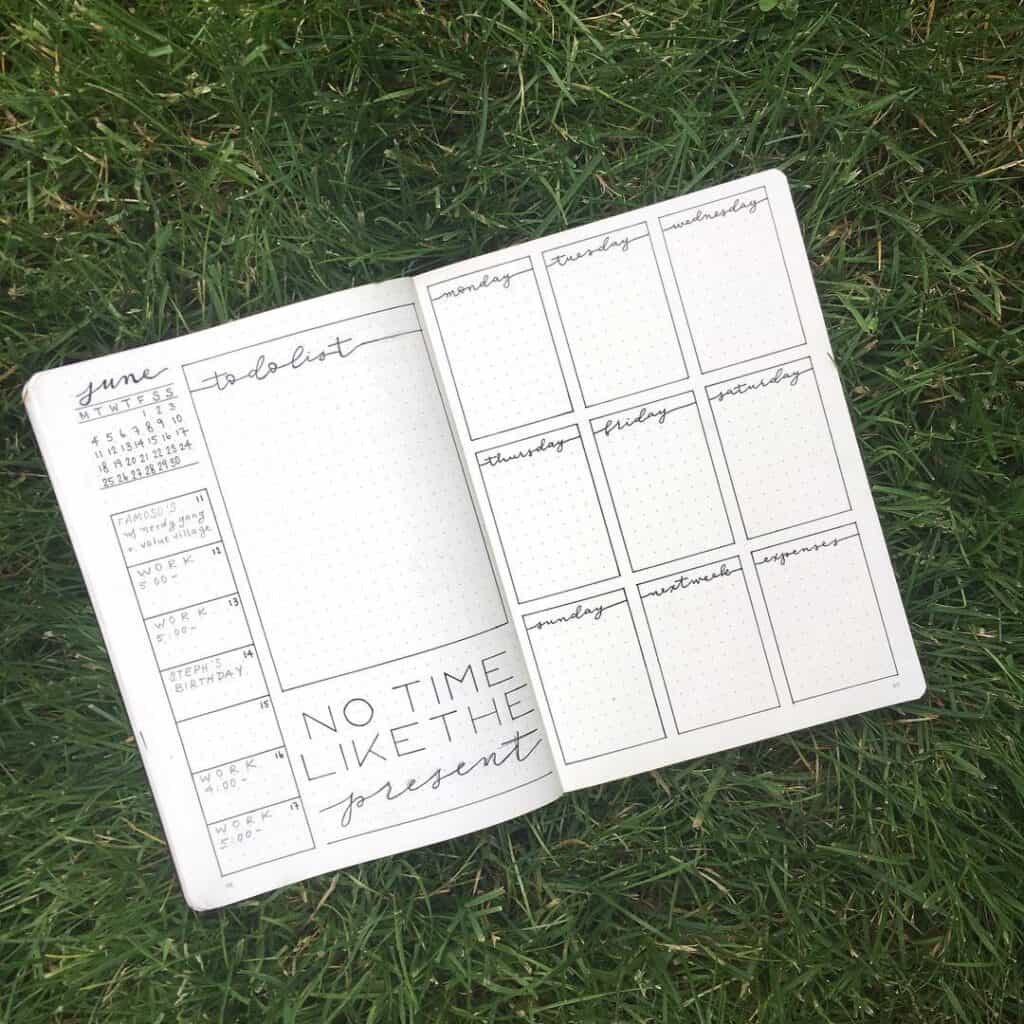
Credit: @studygr.em
Now that you’ve seen a few bullet journal layout ideas, we hope you’ll take action and start on your own journal! You may also like our journaling blog posts including 365 Mindfulness Journal Prompts for Adults, 30 Days of Gratitude Journal Prompts, and 21 Motivating Bullet Journal Goal Page Ideas to Achieve Your Goals!
We also put together a really fun list of affirmations for women and a fun future self journaling exercise you might enjoy!
